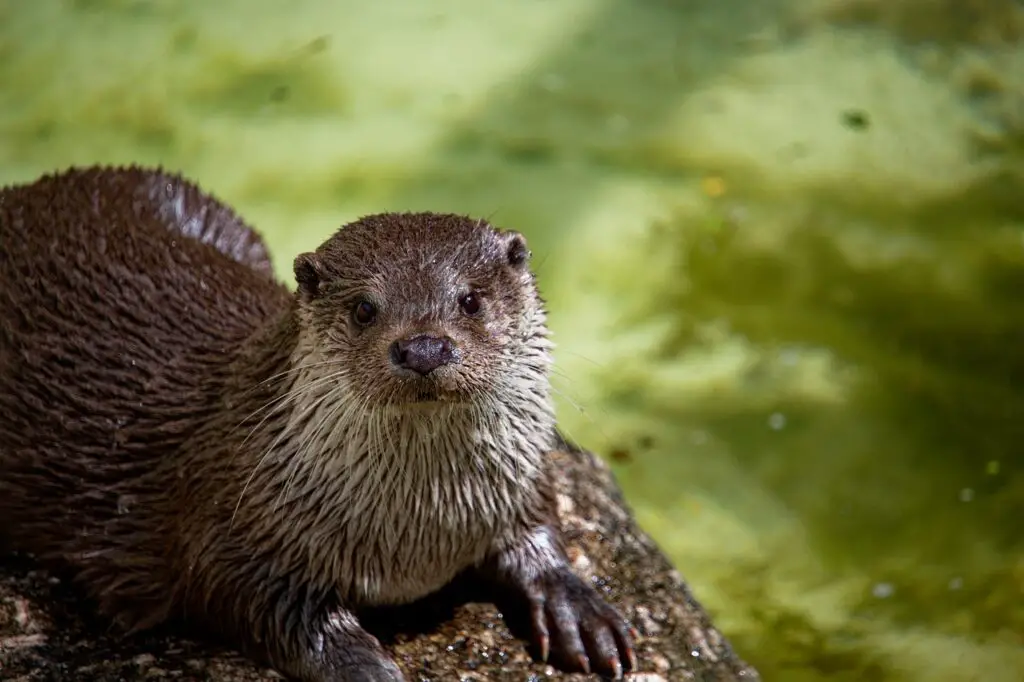In the animal kingdom, the mating behaviors and reproductive strategies of different species can vary significantly.
The otter, a fascinating creature known for its playful nature and aquatic skills, presents an intriguing case.
While some otters form lifelong partnerships, others engage in multiple relationships throughout their lives.
This article explores the complexities of otter mating behavior, shedding light on the factors that influence their reproductive strategies.
By understanding otter reproductive cycles and bonding patterns, we gain valuable insight into the dynamics of these captivating animals.
Key Takeaways
- Some otters mate for life, while most are polygamous.
- Otters generally display violent mating behavior, involving vigorous swimming and chasing.
- Most otters give birth to one to six pups per litter, with sea otters and Southern river otters having longer gestation periods and giving birth to one or two pups per litter.
- Otters can be polygamous or monogamous depending on the species.
Otter Mating Behavior: Polygamy Vs. Monogamy
When it comes to otter mating behavior, the key distinction lies in the choice between polygamy and monogamy. Some otters, such as the small-clawed otters, mate for life and usually do not seek another partner if their original mate dies. On the other hand, most otter species are polygamous, with males being solitary and females living in groups with their pups.
Monogamous otter species include the giant otters and marine otters. During the mating season, male otters compete for females, and females are known to be selective in choosing their mates. Otters engage in playful courtship behaviors before mating.
Understanding the mating behavior of otters helps us better comprehend their social structures and reproductive strategies.
Violent Mating Behavior and Bonding Patterns
In terms of otter mating behavior, one important aspect to consider is their violent mating behavior and the bonding patterns they form during the mating season. Otters are known to display vigorous swimming and chasing during mating, and this behavior can be aggressive and even result in the death of the female.
Otter pairs form bonds for a determined period of time, with polygamous pairs bonding for a few days during the mating season and monogamous pairs bonding for life. Bonding patterns play a crucial role in determining the mating behavior of different otter species.
Male otters compete for females during the mating season, while females are selective in choosing their mates. Playful courtship behaviors are also observed before mating takes place.
Otter Reproduction and Pup Development
During the mating season, after bonding for a determined period of time, otters engage in reproductive behaviors that lead to the development of their pups. Most otters give birth to one to six pups per litter, with sea otters and Southern river otters having longer gestation periods and giving birth to one or two pups per litter. Otter pups are born with fur but are helpless, and weaning generally starts at three months old. Almost all otters give birth on land, except for sea otters. Some otters can delay implantation of fertilized eggs. Below is a table summarizing the reproductive characteristics of different otter species:
| Otter Species | Number of Pups per Litter | Gestation Period | Weaning Age |
|---|---|---|---|
| Sea Otters | 1-2 | Longer | 3 months |
| Southern River Otters | 1-2 | Longer | 3 months |
| Other Otter Species | 1-6 | 2 months | 3 months |
Understanding the reproductive behaviors and pup development of otters provides valuable insights into their life cycle and the challenges they face in raising their young.
Otter Species and Their Mating Habits
The mating habits of otter species vary, with some engaging in polygamous behavior while others are monogamous.
Out of the 13 otter species, eight are polygamous, meaning that males are generally solitary while females live in groups with their pups. Examples of polygamous otter species include the Northern river otter and Southern river otter.
On the other hand, there are monogamous otter species such as the giant otter and marine otter. Bonding patterns can provide insight into the mating behavior of less well-known otter species.
During the mating season, male otters compete for females, and females are selective in choosing their mates. Playful courtship behaviors are often observed before mating takes place.
Sexual Maturity and Reproductive Cycles of Otters
Sexual maturity and reproductive cycles of otters vary among species. North American otter species reach sexual maturity between three and five years of age. Female sea otters reach maturity between two to five years, while males mature at five to six years. Most otter species reach reproductive maturity at 3-4 years.
Otters have an estrous cycle of 28 days, with a duration of three days. The gestation period varies among species, but most otters have a two-month gestation period. It’s important to note that otters can delay implantation of fertilized eggs.
Understanding the sexual maturity and reproductive cycles of otters helps in comprehending their mating behavior and population dynamics.

Erzsebet Frey (Eli Frey) is an ecologist and online entrepreneur with a Master of Science in Ecology from the University of Belgrade. Originally from Serbia, she has lived in Sri Lanka since 2017. Eli has worked internationally in countries like Oman, Brazil, Germany, and Sri Lanka. In 2018, she expanded into SEO and blogging, completing courses from UC Davis and Edinburgh. Eli has founded multiple websites focused on biology, ecology, environmental science, sustainable and simple living, and outdoor activities. She enjoys creating nature and simple living videos on YouTube and participates in speleology, diving, and hiking.

